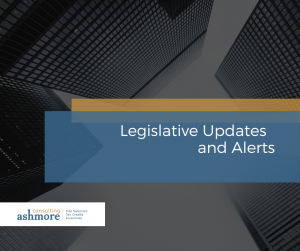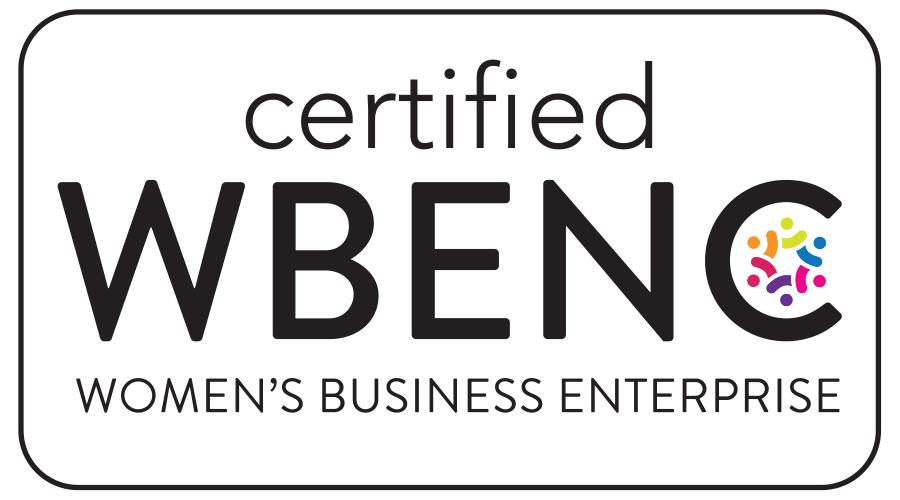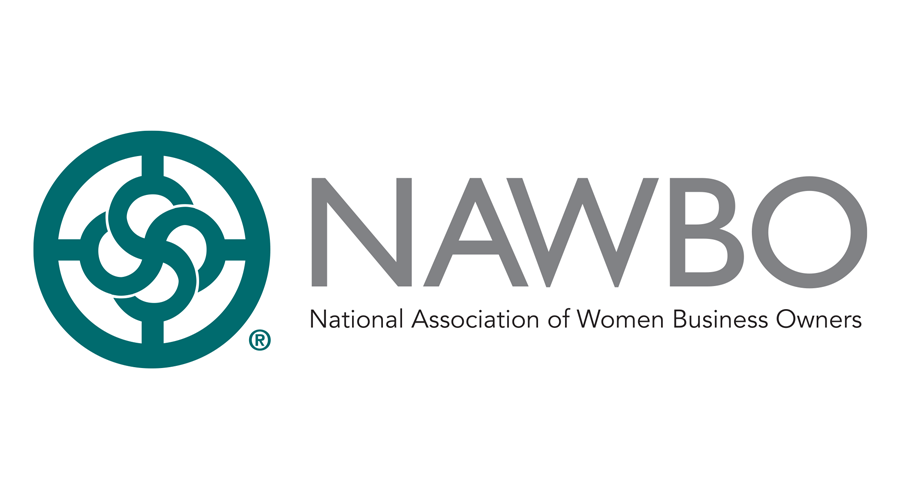 Key Development that affected US state and local income/franchise and other business taxes for the third quarter of 2022.
Key Development that affected US state and local income/franchise and other business taxes for the third quarter of 2022.
Iowa – certifies corporate income tax rate reduction starting in 2023
On March 1, 2022, Iowa Governor Kim Reynolds signed 2022 IA HF 2317, provisions of which provide for the reduction of corporate income tax rates beginning in 2023 if certain revenue targets are met. The new provision requires both the Iowa Department of Revenue (IA DOR) and the Iowa Department of Management (IA DOM) to determine by Nov. 1, 2022 (and by Nov. 1st of each year thereafter) whether net corporate income tax receipts in the prior fiscal year exceeded $700 million. If that receipts threshold is satisfied, then the 9% and 9.8% rate brackets will be adjusted to generate $700 million in net corporate income tax receipts. Those rates will apply to tax years beginning on or after the next Jan. 1st following the determination date. The rates cannot decrease below 5.5%. On Sept. 26, 2022, the IA DOM determined that the net corporate income receipts exceeded $700 million for the prior fiscal year. The following day, the IA DOR determined that, based on the IA DOM’s findings, the two top corporate income tax rates, 9.0% on and 9.8%, should both be reduced to 8.4%, effective for tax years beginning on or after Jan. 1, 2023. This rate applies to income over $100,000.
S.12, Iowa—Corporate Income Tax: Workforce Housing Tax Incentives Program Amended
Iowa amended provisions related to the workforce housing tax incentives program, for corporate income tax purposes. The amendments make the following changes to the program:
- amend the definition of “small city” and add a corresponding definition of “urban area”;
- allow the Iowa Economic Development Authority Board (IEDA) to set maximum average dwelling unit costs for different project types based on the United States Bureau of the Census building permit survey and historical program data;
- allow IEDA to approve a second extension of a project’s completion deadline of up to 12 months; and
- allow projects that exceed the maximum average dwelling unit costs by up to 150 percent to receive a reduced tax incentive award (raised from 110%).
ARC 6467, The Economic Development Authority, effective September 28, 2022.
Pennsylvania – enacts corporate income tax rate reduction and other tax changes
On July 8, 2022, Pennsylvania Governor Tom Wolf signed into law HB 1342 (Act 53), which includes a long sought-after reduction to the corporate income tax rate, market-based sourcing rules for receipts from sales of intangible assets, and codification of the Pennsylvania Department of Revenue’s (PA DOR) economic nexus standard for corporate income taxes, among other changes.
Gradual reduction of corporate income tax rate: Starting in 2023, the current 9.99% corporate income tax rate will decrease to 4.99% over nine years. The rate will be reduced to 8.99% in 2023 and reduced by 0.5% each year until it is reduced to 4.99% in 2031.
Market-based sourcing for intangibles: In determining apportionment of business income, prior law generally sourced receipts from sales of intangible assets based on a costs-of-performance method. Effective for tax years beginning after Dec. 31, 2022, such receipts will be sourced using the market-based sourcing method. This change aligns the sourcing method for sales of intangibles with the method already being used for sourcing sales of services, tangible personal property and real property.
The new law describes how gross receipts from specific intangibles will be sourced to Pennsylvania, including gross receipts from: (1) leases or licenses of intangible property used in the commonwealth; (2) sales of intangible property that is a contract right, government license or similar property authorizing the holder to conduct business activity in a specific geographic area; (3) sales, redemptions, maturities or exchanges of securities held by the taxpayer primarily for sale to customers; (4) interest, fees and penalties imposed on loans secured by real property received by a corporation that regularly lends funds to unaffiliated entities or to individuals; (5) interest, fees and penalties from loans for the sales of tangible personal property if the property is delivered or shipped to a purchaser in the commonwealth; (6) interest, fees and penalties from loans for sales not previously described if the borrower is in the commonwealth; (7) interest, fees and penalties from credit card receivables and credit -2- card fees charged to cardholders if the cardholder’s billing address is in the commonwealth; and (8) interest not otherwise described if the lender’s commercial domicile is in the commonwealth.
Intangible property not otherwise described is excluded from the sales factor numerator and denominator. Under this provision goodwill arising from the sale of a business and gross proceeds/gains from hedging transactions will be excluded from the sales factor numerator and denominator.
Corporate income tax nexus: The law codifies the PA DOR’s economic nexus standard for corporate net income taxes. In Corporation Tax Bulletin 2019-04, the PA DOR said it will deem there to be a rebuttable presumption of a filing requirement for a corporation without physical presence in Pennsylvania if it has $500,000 or more of Pennsylvania-sourced gross receipts. Under the new law, corporate net income tax applies to corporations that have “substantial nexus” with Pennsylvania. The law defines “substantial nexus” as “a direct or indirect business activity that is sufficient to grant the commonwealth authority under the [US] Constitution … to impose tax … and for which a basis exists … to apportion or allocate the corporation’s income to [the] commonwealth.” Business activities include (1) leasing or licensing intangible property that is used in the commonwealth, (2) regularly engaging in transactions with in-state customers involving intangible property (such as loans), or (3) selling intangible property that was used by a corporation in the commonwealth. Similar to the PA DOR policy, the new law includes a rebuttable presumption that a corporation with $500,000 or more of sales sourced in the current tax year to Pennsylvania (under Pa. Stat. Ann. § 7401) has substantial nexus in Pennsylvania without regard to physical presence in Pennsylvania.
The newly added nexus provisions do not apply to affiliated entities domiciled in a foreign nation that has entered into a comprehensive income tax treaty with the US providing for the allocation of all categories of income subject to tax, or withholding of tax, on royalties, licenses, fees and interest in order to prevent double taxation of the foreign entity. These changes apply to tax years beginning after Dec. 31, 2022.
Credits and incentives: The new law modifies various credits and incentives, including the following changes: (1) increases the cap on the research and development (R&D) credit to $60 million per year (from $55 million per year); (2) modifies the film production tax credit; (3) increases the cap on the tax credit for the entertainment economic enhancement program to $24 million per year (from $8 million per year); and (4) clarifies that an affiliate of a qualified business in a keystone opportunity zone is entitled to the same tax exemptions, deductions, abatements and credits provided to the qualified business, if the affiliate also meets the statutory requirements of a qualified business.
Texas
Texas adopts additional amendments to its franchise tax rule for research and development activities credits On July 15, 2022, the Texas Comptroller of Public Accounts (TX Comptroller) filed with the Secretary of State the final amendments to its franchise tax rule, 34 Tex. Admin. Code § 3.599 (Section 3.599), regarding the tax credit for R&D activities (hereafter, the 2022 amendments). The 2022 amendments clarify and modify changes to Section 3.599 that were adopted in October 2021.
Definition of Internal Revenue Code (IRC) in Section 3.599(b)(5): The 2021 amendments stated that, for Texas R&D credit purposes, taxable entities should apply the IRC in effect as of Dec. 31, 2011 and specified that any federal regulation adopted after this date “is only included in this term to the extent a taxpayer must apply that regulation in the 2011 tax year.”
The 2022 amendments changed this provision to say that a federal regulation is adopted if it “could have applied the regulation to the 2011 federal income tax year.” In the preamble of the 2022 amendments, the Comptroller said that it had reconsidered comments received during the 2021 amendments and agreed that the definition adopted in 2021 was too restrictive. The 2022 amendments provide examples of federal Treasury Regulations that apply to the 2011 federal income tax year (and thus can be used as a source for applying the rules for Texas purposes). Specifically, Treas. Reg. § 1.174-2 (definition of research and experimental expenditures) and Treas. Reg. § 1.41-4 (qualified research for expenditures paid or incurred in tax years ending on or after Dec. 31, 2003) can be applied by taxable entities in 2011 for their Texas returns. Concerning Treas. Reg. § 1.41-4(c)(6) (internal use software), however, a taxable -3- entity can elect to follow either: (1) Treas. Reg. § 1.41-4(c)(6) in 26 CFR part 1 and IRB 2001-5, or (2) proposed Treas. Reg. § 1.41-4(c)(6) described in IRB 2002-4 (as provided under Treas. Reg. § 1.41-4(e) (effective/applicability dates)).
Definition of computer software with respect to internal use software in Section 3.599(d)(5): According to the preamble of the 2022 amendments, the definition of computer software with respect to internal use software in Section 3.599(d)(5) is amended to “remove items that are inconsistent with the changes made to the definition of IRC.” As modified, “internal use software” continues to be defined as “computer software developed by, or for the benefit of, the taxable entity primarily for internal use by the taxable entity.” The 2022 amendments, however, remove some of the restrictive language that was included in the 2021 amendments by deleting language that had:
- Specified that a taxable entity used software internally if the software was developed for use in the operation of the business
- Excluded software developed to be commercially sold, leased, licensed or otherwise marketed for separately stated consideration to third parties from the definition of internal use software
- Deemed software to be internal use software when it was developed by a taxable entity primarily for internal use by an entity in an affiliate group that includes the taxable entity
- Required that the determination of whether software is internal use software be dependent on the facts and circumstances that existed at the start of the software’s development
Combined reporting and removal of provisions restricting credit carryforwards in Section 3.599(i): The 2022 amendments retain the provision clarifying that the combined group is the taxable entity for purposes of calculating and reporting the R&D credit but reorganizes Section 3.599(i)(1) and (2). Significantly, Section 3.599(i)(3) is amended to remove language that had restricted credit carryforwards upon change in members of the combined group and to describe how to determine the credit carryforward when there is a change in the membership of the combined group.
In addition, Section 3.599(m) is amended to make clear that the conveyance, assignment or transfer of an ownership interest in the taxable entity does not convey, assign or transfer the taxable entity’s credit.
Legislative developments
Arizona: HB 2156 (enacted July 6, 2022) creates a refundable corporate income tax credit for motion picture production costs. Effective for tax years beginning from and after Dec. 31, 2022, a tax credit is allowed against production costs paid by a motion picture production company that are directly attributed to a motion picture production. The amount of the credit is equal to a percentage of the total amount of qualified production costs. Additional credits are available for (1) the company’s production labor costs related to jobs held by Arizona residents, (2) for the total amount of qualified production cost if an Arizona qualified production facility is used or its primarily film location is in Arizona, or (3) qualified production costs if the production is produced and filmed in association with a long-term tenant of a qualified production facility. The amount of credit that exceeds the company’s income tax will be refunded.
Arkansas: SB 1 (enacted Aug. 11, 2022) accelerates previously enacted corporate income tax rate cuts, moving forward the rate that would have taken effect in 2025. Thus, effective for tax years beginning on and after Jan. 1, 2023, the corporate income tax rate is reduced to 5.3% (from 5.9%), for corporations with net income exceeding $25,000. The law also reduces the individual income tax rate.
Idaho: HB 1 (enacted Sept. 1, 2022) replaces Idaho’s current corporate and individual income tax bracket system with a flat income tax. Currently, the highest income tax rate for corporations and individuals is 6%. Effective for tax years beginning on and after Jan. 1, 2023, the state’s corporate income tax rate is 5.8% and the tax rate on individuals, trusts and estates is 5.8% of taxable income over $2,500 ($5,000 for a joint return).
Massachusetts: HB 5060 (enacted Aug. 11, 2022) establishes the Massachusetts offshore wind industry investment program, which consists of the Massachusetts offshore wind tax incentives program and provides access to expenditures under the Massachusetts offshore wind industry investment trust fund. Tax incentives available to certified offshore wind companies include a refundable jobs credit that can be claimed against income or corporate excise tax. If the amount of credit exceeds the taxpayer’s tax liability, 90% of the excess credit is refundable; excess credit cannot be carried forward. Owners or tenants of an offshore wind facility may take a refundable credit against income or corporate excise tax of up to 50% of its total capital investment in an offshore wind facility. The total amount of credit will be awarded in equal parts over the five taxable years that correspond to the period in which the owner or tenant is certified. The amount of credit available to the tenant cannot exceed its total lease payments for occupancy of the facility for the tax year.
SB 3075 (enacted Aug. 5, 2022) allows a business that employs not more than 100 employees a credit equal to $2,000 for each member of the Massachusetts national guard it hires. The credit is not transferable or refundable; excess credit can be carried forward for up to three years.
New York: A.10507/ S.9467 (enacted Aug. 11, 2022) expands the Excelsior tax credit program to provide eligibility for Green CHIPS projects (leveraging an acronym from the federal Creating Helpful Incentives to Produce Semiconductors – or CHIPS – Act). The Excelsior jobs tax credit for each net new job created by a Green CHIPS project equals the product of gross wages paid and up to 7.5%; however, for Green CHIPS projects only the first $200,000 of gross wages per job is eligible for the credit (this cap may be adjusted annually for inflation). The Excelsior investment tax credit is an amount up to 5% of the cost or other basis for federal income tax purposes of the qualified investment in the Green CHIPS project. The Excelsior R&D tax credit for Green CHIPS projects shall not exceed 8% of the R&D expenditures attributable to activities conducted in New York.
New York City: A.10506 / S.9454 (enacted Aug. 31, 2022) amends the New York City (NYC) administrative tax code by expanding NYC’s economic nexus rules. Currently, a corporation is doing business in NYC if it (1) issues credits cards to 1,000 or more customers with mailing addresses in NYC; (2) has merchant customer contracts covering 1,000 or more locations in NYC to which the corporation remitted payments for credit card transactions during the tax year; or (3) the sum of both customers and merchant contracts equals 1,000 or more. Under the new law, and effective for tax years beginning on or after Jan. 1, 2022, the Business Corporation Tax (BCT) also will apply to corporations “deriving receipts from activity in the city.” A corporation is deriving receipts from activity in the city if it has $1 million or more in receipts from NYC sources in the tax year. In addition, nexus will extend to a corporation that is part of a unitary group and does not meet any of these thresholds if members of the group meeting certain requirements collectively meet the thresholds. These unitary group provisions do not apply to corporations excluded from a combined report under N.Y.C. Admin. Code § 11-654.3(2)(c).
The law also: (1) modifies NYC’s new pass-through entity (PTE) tax regime to allow the NYC PTE tax election to be made starting in 2022 (from 2023); 1 (2) excludes from certain NYC taxes, including the BCT (retroactive to tax years beginning on and after Jan. 1, 2021), amounts received through the COVID-19 pandemic small business recovery grant program or the small business resilience grant program; and (3) amends the BCT’s provision on determining entire net income (ENI) to add references to NYC and New York State elective PTE taxes.
Virginia: SB 47 (enacted Aug. 4, 2022) makes various changes to the Virginia housing opportunity tax credit. For 2022-2025 the annual credit cap is increased to $60 million (from $15 million available for 2021), and a new aggregate cap of $255 million applies to all applicable projects across all years (i.e., 2021 through 2025). In addition, for years 2022-2025, the credit cannot be claimed immediately but will be allowed ratably over a 10-year period. Housing opportunity tax credits cannot be awarded after Dec. 31, 2025; however, a taxpayer can continue to claim credits awarded before Jan. 1, 2026, pursuant to the applicable credit period.
Get help navigating tax credits and business incentives that can save your business money. Reach out to Ashmore Consulting today.
The information contained herein is general in nature and is not intended, and should not be construed, as legal, accounting or tax advice or opinion provided by Ashmore Consulting LLC to the reader. The reader also is cautioned that this material may not be applicable to, or suitable for, the reader’s specific circumstances or needs, and may require consideration of non-tax and other tax factors if any action is to be contemplated. The reader should contact Ashmore Consulting LLC or other tax professional prior to taking any action based upon this information. Ashmore Consulting LLC assumes no obligation to inform the reader of any changes in tax laws or other factors that could affect the information contained herein.

 Ashmore Consulting is proud to join Pledge 1%, a global movement creating new normal where companies of all sizes integrate giving back into their culture and values. Pledge 1% empowers companies to donate 1% of product, 1% of equity, 1% of profit or 1% of employee time to causes of their choice. Over 1,500 companies in 40 countries have taken the Pledge and committed to give to communities around the world. Ashmore Consulting is excited to join Pledge 1%’s network of founders, entrepreneurs and companies around the globe that have committed to giving back.
Ashmore Consulting is proud to join Pledge 1%, a global movement creating new normal where companies of all sizes integrate giving back into their culture and values. Pledge 1% empowers companies to donate 1% of product, 1% of equity, 1% of profit or 1% of employee time to causes of their choice. Over 1,500 companies in 40 countries have taken the Pledge and committed to give to communities around the world. Ashmore Consulting is excited to join Pledge 1%’s network of founders, entrepreneurs and companies around the globe that have committed to giving back.


